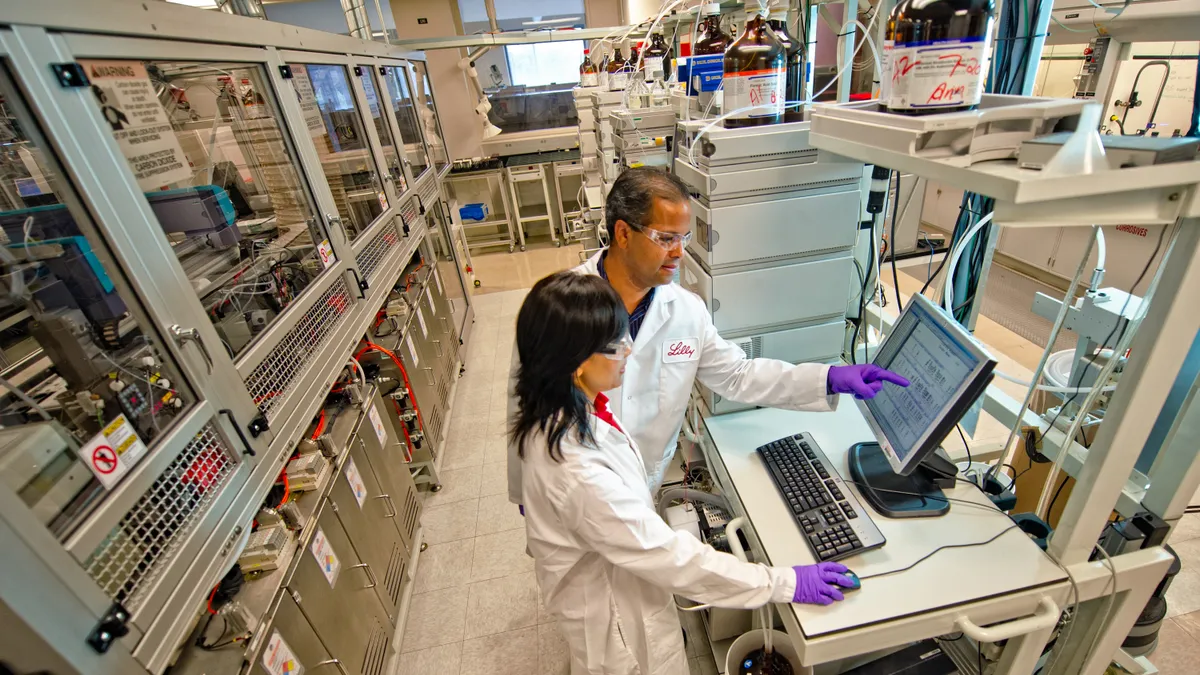Most Americans have trouble answering even some basic science questions. At least, that’s what a Pew Research study indicates; less than half (46%) could identify how light passes through a spectrum. Meanwhile, the same report showed only 29% of U.S. citizens consider our current K-12 education in Science, Technology, Engineering and Math (STEM) to be among the best in the world.
This could be a reason why employers are finding it difficult to communicate what STEM jobs are to candidates who have limited knowledge or experience with these roles. How can employers participate in rebranding STEM careers as something positive and attainable? How can recruiters depict STEM jobs in a realistic way while still making them appealing?
Why are STEM careers so mystifying?
The Economics & Statistics Administration reports that STEM careers are predicted to grow at an above average rate of 8.9% between now and 2024 (as compared to a 6.4% growth rate for all other non-STEM careers). STEM careers also pay typically 12% higher than all other jobs. As of 2016, the U.S. had roughly three million more STEM jobs available than it had skilled workers to fill them.There are a lot of opportunities available to those interested in learning the skills needed to enter these types of jobs.
With all of the STEM jobs that go unfilled, one would think that candidates would be clambering to work for the best companies. However, job seekers often find the descriptions of these jobs so confusing and intimidating that they don’t bother to apply.
Alan Stukalsky, chief digital officer of Randstad North America, spoke with HR Dive to share some insight into the minds of candidates. Randstad research shows that many of the misconceptions about STEM careers come from outdated, negative ideas that people have about what these professionals do. Instead of thinking about STEM careers as “computer programmers” and “industrial engineers,” it’s important to remind candidates of the wide range of jobs that fall under the STEM career umbrella.
For example, their research shows:
- 64% of today’s students rate creating video games for a living as ‘very fun;’
- 54% think it would be ‘very fun’ to earn a living working with marine life; and
- 86% say it would be ‘somewhat fun’ to make websites for a career;
The road to rebranding STEM careers
In order to motivate candidates to consider careers in STEM occupations, Stukalsky says students should be encouraged to think about the wider applications of their skills. “One thing we need to push heavily is getting back to our schools and traditional STEM classes and emphasize how they apply to the business world," he said. "There are a lot of cool jobs that apply to STEM careers, young people just don't see the connection.”
Stukalsky added that curriculum developers need to work more closely with companies to ensure that the learning materials presented to students are aligned with real world examples of STEM careers. “Employers can participate in this effort by using their expertise to collaborate with educational systems to bring real world skills to light," he said.
Another way to make STEM careers less intimidating is to provide hands on, experiential learning opportunities to the community. As president of STE(A)M TRUCK, a mobile makers space in Atlanta, GA, Stukalsky and his team enjoy educating young minds with activities designed to expose them to STEM concepts at an early age. He also shared that companies can easily host open houses and invite candidates to "try on" STEM jobs to see what they are really about. Many times, this enlightens and empowers people enough to know that they have the right skills to succeed.
Oftentimes, Stukalsky said, young people do not have mentors in STEM careers — therefore they don't have any examples to learn from. Only around 52% of young people know someone who works in STEM, he added. It’s important for both boys and girls to have mentors in this career path so they can see that it’s possible to build a rewarding career.
Companies that want to rebrand notions around STEM careers may want to form mentoring groups, conduct outreach with local high schools and colleges, and provide access to in-house community events to create more positive ideas around their industries.
Increasing diversity in STEM careers
In terms of increasing diversity in hiring for STEM careers, it’s important to think outside of the general ideas of who may be suitable or interested. Opening up and educating all people about the types of careers that are either STEM based or contain components of these jobs is vital for a growing industry. There is a place for everyone.
Kris Foss is the managing director of Disability Solutions, an organization that consults with top U.S. companies to provide opportunities for the relatively untapped market of disabled adults. Foss shared examples of companies that had successfully integrated people of all diversities into their STEM job types.
“Nearly 40% of employers are facing challenges hiring qualified employees, while at the same time one in five people in the US have a disability and are facing challenges in getting hired," Foss told HR Dive. But the problem she sees is that companies often don't cast the net wide enough when it comes to hiring for diversity.
"Companies often reach out to state agencies and vocational rehab centers, but depending on the qualifications of the jobs — they don't get a good enough volume of candidates who have the right skills needed,” Foss said. The key is communicating the opportunities for each job that is being sourced for, the skills and actual tasks each job entails.
Using the approach of a more targeted and active outreach campaign, Ability Beyond has been able to successfully place individuals with disabilities into rewarding jobs at well-known brands such as PepsiCo, Synchrony Financial, American Express, Aon and Staples.
“We create excitement around every brand we work with, reaching out to college campus disabled student groups, veterans’ groups, high school career transition programs and more," Foss said. "The goal is to create a way so that individuals can experience a ‘day in the life’ of each of the positions that need qualified candidates.” This involves observation of the work environment, skills, roles, certifications needed and more, including a strategic communication piece to the networks candidates connect with.
“If you can take the fear factor out of it, break it down what it takes to do this job — this makes it more feasible for candidates,” Foss said. She shared how one of their clients, PepsiCo, had an open house with hands-on demonstrations for participants to try the job out. By tapping into the power of the brand, the company was able to create lots of excitement and energy around team members.
As a result of the combined efforts of PepsiCo and Ability Beyond, the company opened up a new Las Vegas facility that has become the pilot for future programs geared towards employing a more diverse group of employees. Currently, more than half of the employees at this location are individuals with disabilities, including management level employees.
Any company can follow this example, by focusing on communicating opportunities for disabled individuals, veterans, men, women, minorities and those from other diverse backgrounds. Just as there are limitless kinds of people out there in the world, there are tons of jobs that fall under the STEM spectrum to be discovered.




















